The first 7 decades of the 17th century were a jolly time in the Dutch Republic The state was the most advanced in Europe during this period.
Many famous Dutch artists emerged as the art market was booming during this time and many painters could make a good living.
Some of the most notable Dutch Golden Age paintings are classified as genre paintings. These focus on ordinary people in settings ranging from landscapes to the interiors of taverns.
In this article, you’ll discover some of the most interesting facts about The Dancing Couple, a painting by Jan Steen that embodies the spirit of a thriving nation.
1. It was painted while the artist was living in Haarlem in the 1660s
Jan Havickszoon Steen was born in 1626 in the Dutch city of Leiden in the western part of the Netherlands. His family were wealthy Catholic brewers so he was well-off.
He went to the same Latin school as Rembrandt van Rijn (1606-1669), another famous Dutch Golden Age artist from Leiden.
Although he founded the Guild of Saint Luke in his home city in 1648, he didn’t stay here and moved quite a bit during his lifetime.
The places he lived include The Hague, Delft, Warmond ( a town just north of Leiden), and Haarlem between 1660 and 1670.
He completed The Dancing Couple in 1663, a period in his life when he lived in the Dutch city of Haarlem.
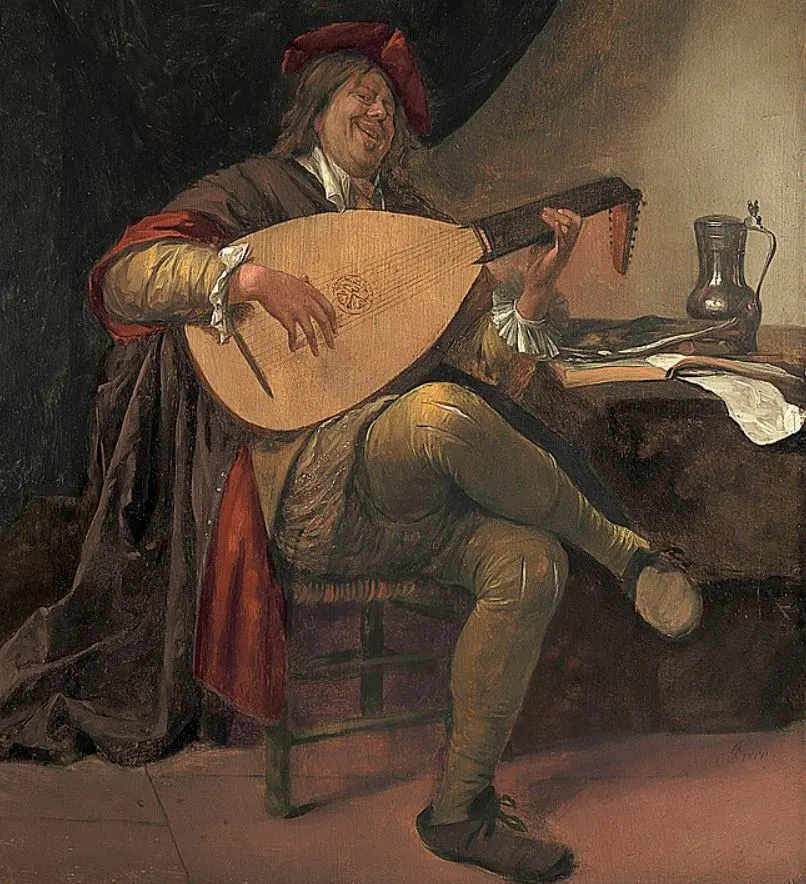
2. It depicts a 17th-century party centered around a dancing couple

The Dutch Golden Age was a merry period in Dutch history when the Dutch Republic was thriving. This reflects in the type of genre paintings that were created during the 17th century.
Jan Steen was one of the most notable genre paintings of his time and completed about 800 paintings of which only 350 survive today.
This painting is a great example of people having a great time. The dancing couple in the center is accompanied by musicians to the right and a table full of happy people can be seen on the left.
The merry company sits or stands inside a vine-covered structure that looks out on the village in the background.

3. It’s a great example of the influence of the local theater guild on Steen’s oeuvre
What’s remarkable about Steen’s oeuvre is that he probably found inspiration at the local theater guild wherever he lived. This is referred to as the “Rhetoricians’ Chambers” or the “Rederijkerskamers.”
This can be compared to the Italian Commedia Dell’Arte theater group that become popular in Europe and which inspired the oeuvre of Jean-Antoine Watteau (1684-1721) several decades later.
What’s remarkable about this notion is that it’s hard to judge whether or not Steen painted real people or characters playing a role in one of the plays he saw.
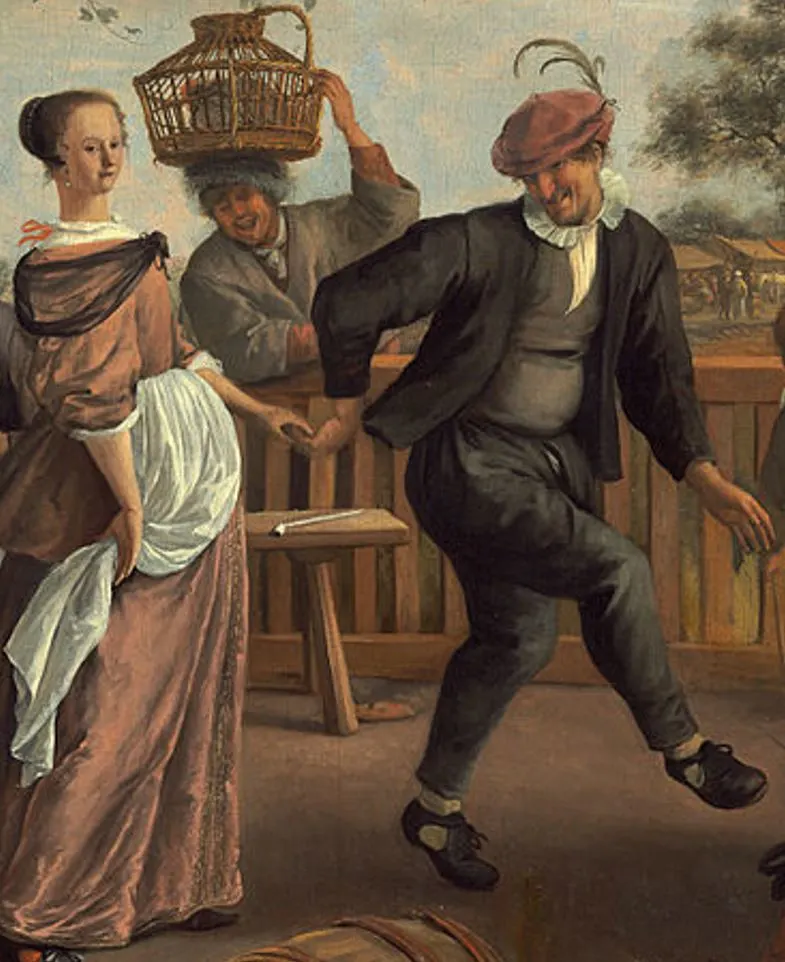
4. The painting looks frivolous but features a lot of warning signs
The popular artist often included popular Dutch proverbs and witty messages in his paintings. This is also the case in The Dancing Couple.
Even though the painting is full of people having a good time, Steen made sure to add a number of elements that warn people of the futility and transient nature of Earthly delights.
Some of these include the cracked eggshells on the floor and the broken flowers. His signature and date are right next to it in the bottom left corner of the painting.
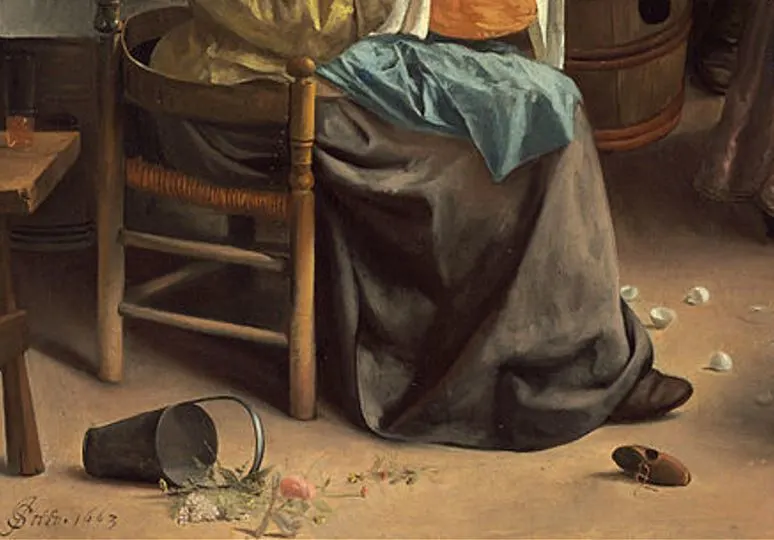
5. Jan Steen included a self-portrait in the painting as well
When you take a closer look at the people sitting at the table, you can see a jolly man holding the chin of a lady drinking a glass of wine.
This is a self-portrait of Jan Steen, a man who loved to party and drink a good amount of alcohol himself.
Considering he was born into a family of brewers, this is not really a surprise.

6. The chaotic scene is essentially a representation of Steen’s own life
Jan Steen loved to indulge in the product in the product that his family produced, and this became very clear when he was left in charge of his own brewery and establishment in Delft between 1654 and 1657.
A massive explosion flattened large parts of the city shortly after he moved there and the art market collapsed. He was forced to open up a brewery to make ends meet, but this wasn’t a great success, to put it euphemistically.
Behind the merry and jolly façace was a drunkard who spent more money than he had. The Dutch saying “to run a household like Jan Steen” was based on his exploits.
Luckily for him, his painting skills allowed him to continue his drinking sessions for the rest of his life.
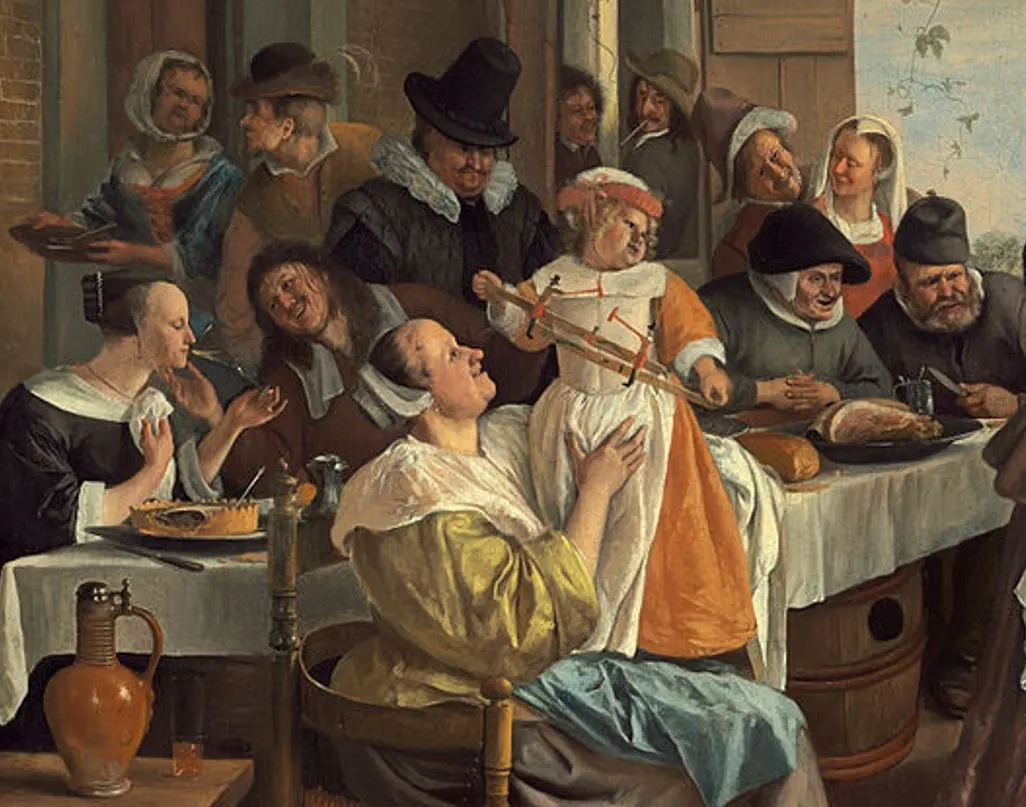
7. How big is The Dancing Couple by Jan Steen?
Steen was a versatile artist who didn’t limit himself to frivolous scenes. He also painted landscapes, portraits, and historical, mythological, and religious scenes in various different sizes.
The Dancing Couple (1663) by Jan Steen is a medium-sized oil on canvas painting that has dimensions of 102.5 × 142.5 centimeters (40.4 × 56.1 inches).
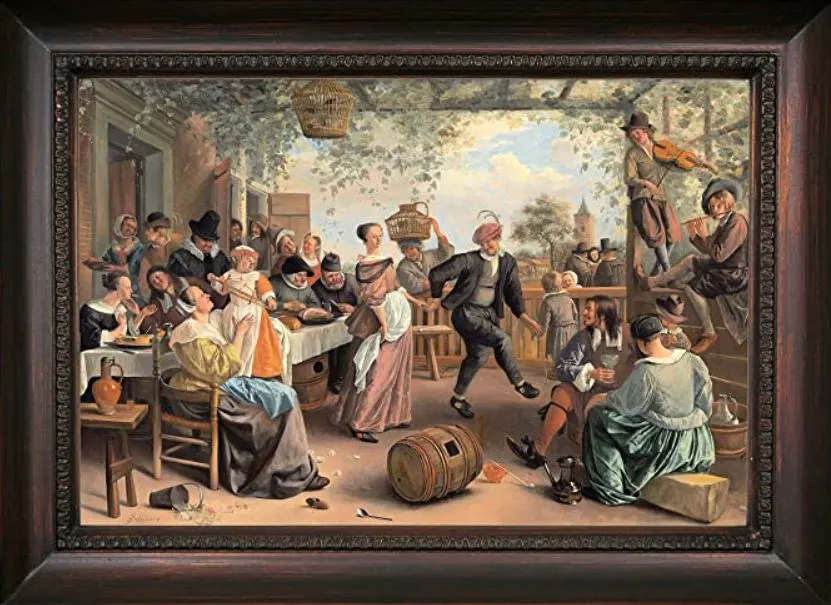
8. Where is Jan Steen’s painting located today?
The famous painting by Jan Steen has an extensive history of ownership, especially during the first centuries after it was completed.
It moved hands several times in the Netherlands and ended up in the collection of Henry Francis Hope Pelham-Clinton-Hope, 8th duke of Newcastle-under-Lyme (1866-1941) in 1891.
It was sold to American businessman Peter Arrell Browne Widener (1834-1915) in 1901 and was eventually donated to the National Gallery of Art in Washington D.C. in 1941.
Today, the painting is on display at the NGA, in Gallery 246 on the main floor of the beautiful West Building.

